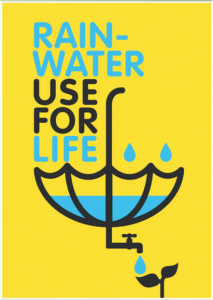Rain water harvesting
Home >> Services >> Rain water harvesting

In the hydrological cycle, rain is the first form of water and is the primary source while rivers, lakes, and groundwater are all secondary sources. In the process, it is forgotten that rain is the fundamental source that feeds all these secondary sources. In the hydrological cycle, rain is the first form of water and is the primary source while rivers, lakes, and groundwater are all secondary sources. In the process, it is forgotten that rain is the fundamental source that feeds all these secondary sources.
Usually what we think, that the fresh water available is abundant while comparing the total water on earth but actually it is not so. It is sad and frightening to know the facts that only 0.65 % Groundwater and surface water is available in the form of fresh water out of 2.8 % world’s fresh water, the remaining 2.15 % is in the Polar and Glacial Regions while the other 97.2 % is found in the Oceans.
In India more than 60 percent of the Irrigation requirements and 85% of drinking water are dependent on Groundwater. As per the World Bank report: If the present trend of exploiting the groundwater continues, in another 20 years time about 60 percent of all aquifers in India are likely to be in critical condition. The only solution to overcome this problem is, to recharge the groundwater aquifer by adopting Rainwater Harvesting technique.
Rain water is the purest form of water when it falls on the roof of the building it mixes with dirt particles and leaves deposited on the roof and flows through the Rain drain pipes. By installing the filters before leaving the water into the sump / recharging well .To overcome this, RWH filters are to be used before letting the water into the storage tank / recharging wells.
For instance, when it rains in a city, while considering minimum rainfall of 25mm/day and assume a medium individual house of 100sqm of roof area yields around 2,000 liters of water and two houses 4,000 liters and 10 houses, 20,000 liters and let us assume a residential urban block consisting of 500 houses with a rooftop area of around 100square meters, here each block would yield one million liters of water in a day and finally flows as waste in to the drains.
Sunirmiti committed to convert 5 MN sq ft terrace as rain catchment by 2022.
Types
- Recharging the bore well- Increase in the bore output, decrease the water hardness, Increase in the groundwater level.
- Recharging the groundwater tank/raw or utility water tank – Use the water for utility, vehicle and utensil washing, floor mopping, gardening etc.
Our Visitor






